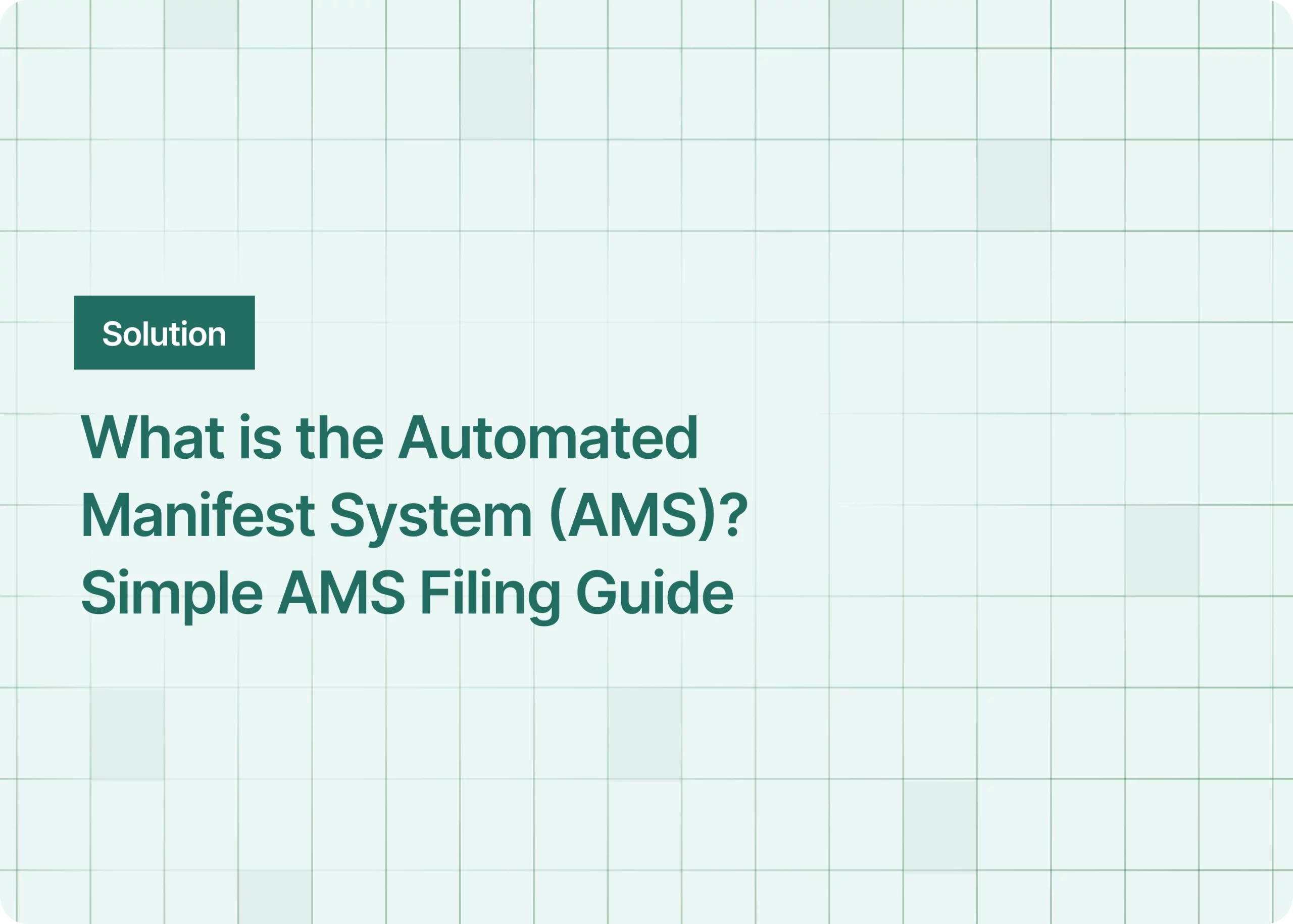Automated manifest system (AMS) was created to collect shipment information formulated by U.S Customs and Border Protection(CBP) in 2004. It includes departure, arrival, and release information between the carrier, freight forwarder, exporter, and importer.
Furthermore, documents should be submitted to the US customs with ISF within 24 hours by freight forwarders.
What’s the Difference Between ISF and AMS
AMS: Shipping carriers must report their cargo to customs before sailing.
ISF: Prior to loading cargos onto the ship, the importer must register cargo into the customs system
Related articles that you may find helpful
ISF ( Importer Security Filing )
AMS(Automated manifest system)
Why Should You Utilize An AMS
AMS is directly connected to Customs and Border Protection(CBP). Sharing of information is transparent and instant between two sides(Importer & Customs and Border Protection. Additionally, CBP stipulates freight forwarders to use AMS also based on the advantages listed below:
- Save time and financial problems between countries
- Accelerate the process of AMS filing
- Can set authority so that those with permission can transfer vessel cargo details
AMS Requirements
The document must include two parts at which shipment details:
- Cargo reporting before shipment: It’s significant to know that US-bound and transit cargos are required to submit different data elements. US-bound cargos are required to submit 10 data elements (ISF-10), while transit cargos only need 5 (ISF-5).
- Conveyance report before arrival: Forwarders must submit customs entry declaration to collect manifest (HBL) before shipping at the port.
Tackling with this paperwork was quite exhausting. This is why we sorted out a checklist of items in order to make sure you hand over the correct files through AMS.
AMS Checklist
- Completed names and addresses of shipper and consignee
- Precise information of the cargo, including weight and amount
- The port that the cargo was loaded
- Last foreign port before the vessel departs for the U.S.
- Vessel name, number
- Country of documentation
- Standard Carrier Alpha Code (SCAC)
- Scheduled date of arrival at first U.S. port
- The first foreign port where the carrier takes possession of the cargo
- Container number
- Container seal number -serial number of the last seal applied when the container is loaded
Assist you in handling complex AMS filing processes
When to File AMS
Basically, freight forwarders must use AMS to file within 24 hours before the cargo leaves the country of origin. If you have any failure in submitting files, it’ll cost you tons of money and worsen the company’s reputation in the U.S.
According to different situations, having different inbound transmission times such as vessel, air, and etc. have the following timetable:
| Inbound Transmission Receive In AMS | ||
|---|---|---|
| Type of Cargo | Situation | Time of Receipt |
| Vessel | Before the arrival of bulk shipments
Before loading at the foreign port for non-bulk shipments |
24 hours |
| Air | Before wheels up from NAFTA | 4 hours |
| Rail | Before arrival in the U.S. | 2 hours |
| Truck | Non-Fast before arrival Free and secure trade |
1 hour 0.5hour |
From: Global Logistics Ocean and Air
Benefits in Managing AMS Properly
Please remember to file AMS within 24 hours if you are concerned about improper AMS filing and penalties. Reconfirming the details on Customs and Border Protection(CBP) is the best way.
It is very time-consuming and tedious for freight forwarders to deal with paperwork. Therefore, GoFreight is the best freight forwarder software that will help increase your productivity.
See how GoFreight can help you!





